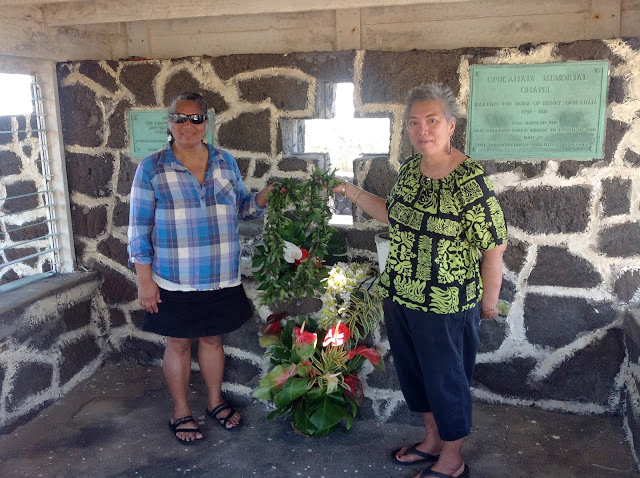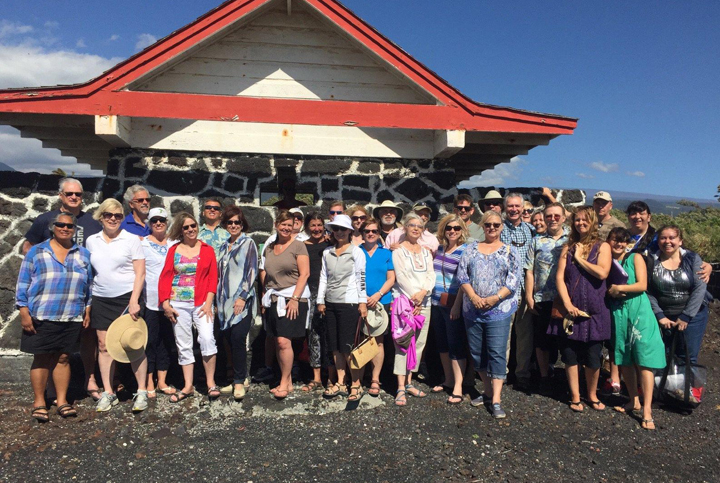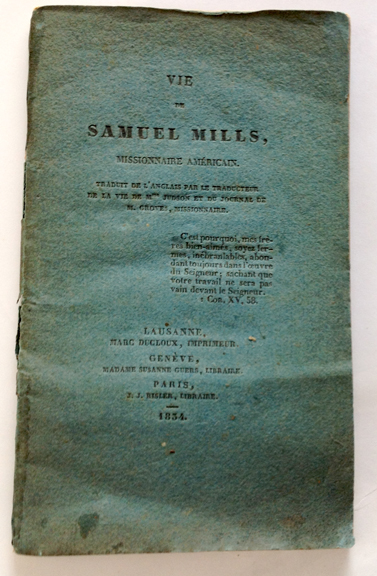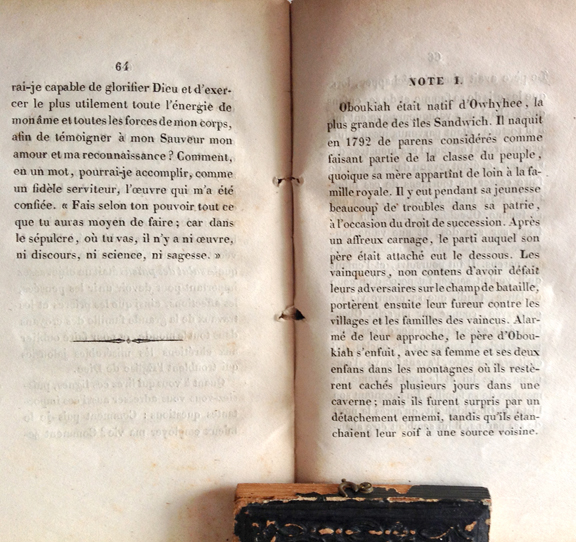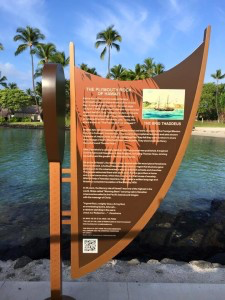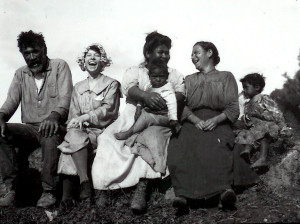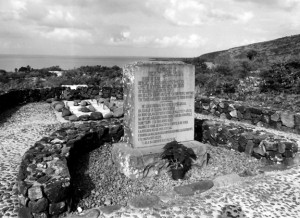Deborah Li‘ikapeka Lee of Hilo (right) holds a maile lei sent especially over from Kaua‘i to be placed at the ‘Opukaha‘ia Memorial Chapel at Punalu‘u Beach on Monday, February 15. She is accompanied by her cousin Cynthia Lehua Nani Ho‘omanawanui-Akimseu, also of Hilo. Deborah and Cynthia are both lineal descendants of ‘Opukaha‘ia. They took part in the Hana Hou Christian Heritage Tour. In 1993 Deborah fulfilled her vision of returning the remains of ‘Opukaha‘ia from his grave site in Cornwall, Connecticut back to his home island. Photo by Chris Cook
I served as an interpretive guide on Dave and Cheryl Buehling’s first Hana Hou Christian Heritage Tour held on the Island of Hawai‘i Saturday, February 13 through Tuesday, February 16. The tour focused on the Hawai‘i side of the life of ‘Opukaha‘ia. A group of 24 visitors from the Mainland flew into Kailua-Kona to join the tour. Local participants also joined the tour. Stops spread across four days included the Kahikolu Church overlooking Kealakekua Bay, the Hikiau Heiau and the supposed site of ‘Opukaha‘ia’s altar located alongside the heiau, the ‘Opukaha‘ia chapel overlooking Punalu‘u Beach in Ka‘u (nearby Henry’s home village of Ninole), Volcano National Park where Mary Boyd told the story of Kapiolani defying the volcano goddess Pele, and a final day at the historic Haili Church in Hilo, a church which once counted a congregation of over 12,000 Native Hawaiians during Hawai‘i’s Great Awakening in the late 1830s and early 1840s.
The Hana Hou Christian Heritage Tour led by Dave and Cheryl Buehling gathered at the ‘Opukaha‘ia Memorial Chapel at Punalu‘u Beach on Monday, February 15. Tour member traveled to Hawai‘i Island from across the Mainland and were joined by local residents. (Dave Buehling photo)
For more information go to the Ka‘u Calendar News Briefs.

